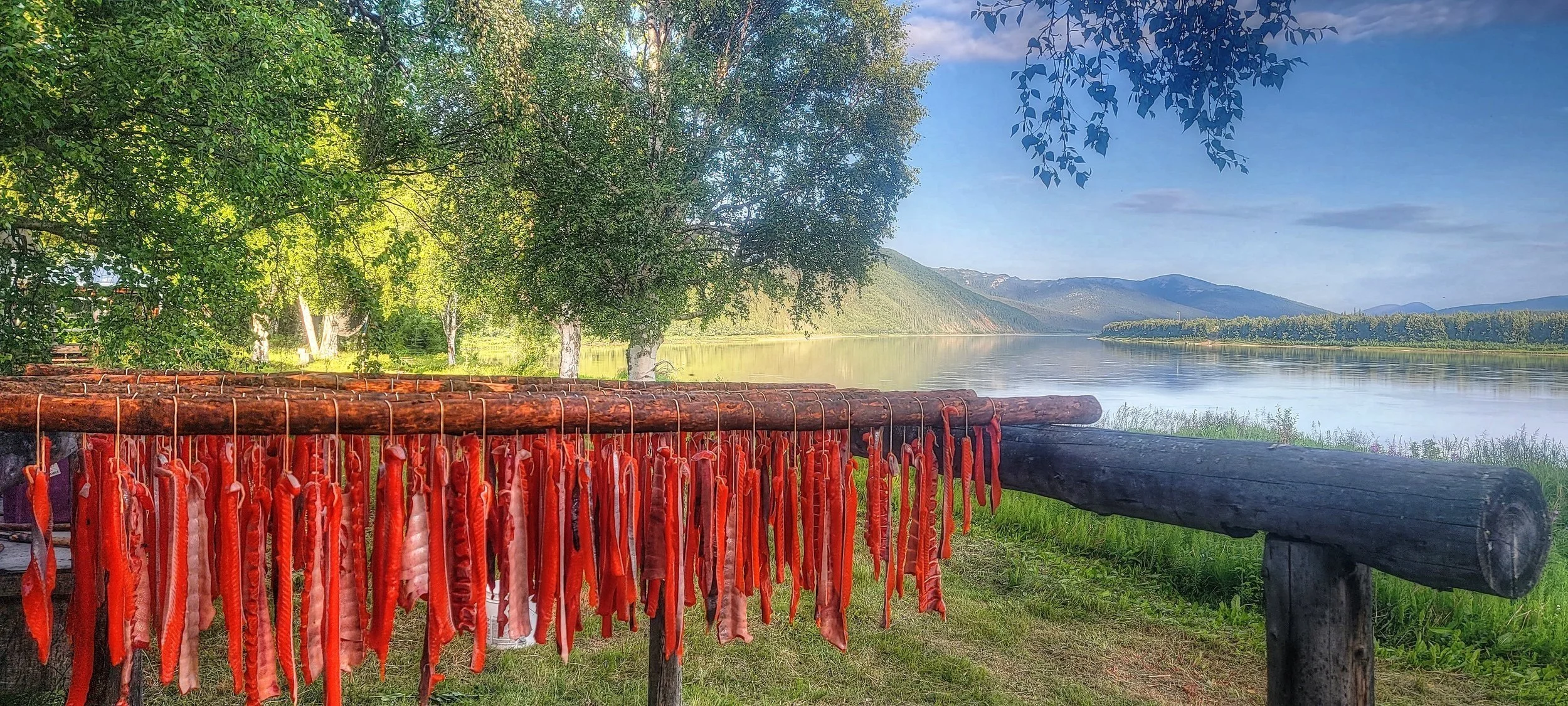The Alaska Department of Fish and Game released preliminary salmon harvest, escapement, and run reconstruction data for Kuskokwim River salmon stocks in September and November 2021. In November 2021, ADF&G also released preliminary commercial fishing data for the Kuskokwim Bay.
Chinook (King) Salmon
The preliminary postseason 2021 run size estimate of Kuskokwim River Chinook salmon is 129,005 fish. A preliminarily estimated 101,203 of those fish made it to their spawning grounds (escapement estimate), and a preliminarily estimated 27,802 Chinook salmon were harvested by subsistence users. Because ADF&G did not fly any aerial surveys in 2021, the escapement estimate is informed only by 3 weir projects, making it uncertain, though independent run assessments have verified this estimate. The subsistence harvest estimate is primarily informed by lower river in-season harvest estimates conducted by KRITFC, UFSWS, and ONC through the CBHM program.
The estimated 2021 Chinook salmon commercial harvest is 2,582 fish.
ADF&G Table 1: Chinook salmon spawning weir escapement, Kuskokwim River drainage, Kuskokwim Management area 2011-2021. See November 2021 Kuskokwim River Salmon Management Working Group meeting packet, page 8.
Chum (Dog) Salmon
For the second year in a row, Kuskokwim River chum salmon returned in dramatically declined numbers compared to historical averages. The 2021 numbers were the lowest on record. The preliminary escapement count of 4,153 fish at the Kogrukluk River weir did not meet the established sustainable escapement goal range (15,000–49,000 fish), and passage at all other weir projects was well below average.
The estimated 2021 chum salmon commercial harvest is 5,845 fish.
ADF&G Table 4: Chinook salmon spawning weir escapement, Kuskokwim River drainage, Kuskokwim Management area 2011-2021. See November 2021 Kuskokwim River Salmon Management Working Group meeting packet, page 11.
Sockeye (Red) Salmon
The preliminary Kogrukluk River weir escapement of 13,534 sockeye salmon met the established sustainable escapement goal range (4,400–17,000 fish). The Telaquana River weir observed the fifth highest escapement of sockeye salmon since the project was established in 2010 with a count of 123,958 fish.
The estimated 2021 sockeye salmon commercial harvest is 114,425 fish.
ADF&G Table 3: Sockeye salmon spawning weir escapement, Kuskokwim River drainage, Kuskokwim Management area 2011-2021. See November 2021 Kuskokwim River Salmon Management Working Group meeting packet, page 10.
Silver (Coho) Salmon
Coho salmon escapement was evaluated at two middle Kuskokwim River weirs in 2021. The George River weir coho salmon escapement of 31,491 fish was above the most recent 10-year average (2011–2020) of 22,462 fish (Table 5). At the Kogrukluk River weir, 14,373 coho salmon were counted, which met the sustainable escapement goal range (13,000– 28,000 fish).
The estimated 2021 silver salmon commercial harvest is 14,204 fish.
ADF&G Table 5: Chinook salmon spawning weir escapement, Kuskokwim River drainage, Kuskokwim Management area 2011-2021. See November 2021 Kuskokwim River Salmon Management Working Group meeting packet, page 12.
KRITFC Analysis
KRITFC In-Season Managers successfully co-managed the 2021 Chinook salmon run with USFWS at the Yukon Delta National Wildlife Refuge. The estimated return of 101,000 fish falls within the upper end of the escapement goal range (65,000-120,000 fish) and near our escapement goal target of 110,000 fish, which was KRITFC and the Refuge’s aim as laid out in our joint 2021 Kuskokwim River Salmon Management Strategy. We give a big quyana to James Nicori (Kwethluk), Jacqueline Cleveland (Quinhagak), Megan Leary (Napaimute), and Avery Hoffman (Bethel) for their work and perseverance successfully managing this run throughout another arduous season, and a special thank you to the 2021 fisheries management team at the Refuge for their partnership in our seventh year of federal collaborative management.
Despite risk factors and uncertainties surrounding the environmental conditions and management of Chinook salmon, KRITFC and USFWS achieved our joint Chinook salmon escapement goal target range in 2021. Our collaborative management partnership in federal waters of the Kuskokwim led to a preliminary estimated escapement of 101,203 Chinook salmon, which falls within the high end of ADF&G’s escapement goal range (65,000-120,000 fish).
Nonetheless, subsistence harvests of king salmon remain lower than the amount necessary for subsistence. Because of declined harvest numbers and the shrinking size of king salmon, our fishermen are harvesting only 20% of what we need according to historical long-term harvest information. KRITFC will continue to work for the conservation and restoration of our Chinook salmon, in and out of the salmon fishing season.
Figure showing Kuskokwim River Chinook salmon harvests by user group (subsistence and commercial), 1976 to 2021. Since 2010, Chinook salmon harvests have fallen below ADF&G’s established amounts necessary for subsistence (ANS) numbers.
KRITFC is also highly concerned about chum salmon, which provide food security to communities in times of Chinook salmon shortage as well as critical nutrients to headwaters ecosystems. In 2021, chum salmon declined 95-97% throughout the Kuskokwim drainage area. Testimony from subsistence fishermen documents that all chum salmon harvests from the mouth to headwaters were steeply declined, and extremely few chum salmon carcasses could be found along headwater river banks. KRITFC will continue to monitor and manage our chum salmon stocks to assess what is happening and how we can restore this important species to abundance.
2021 Kuskokwim River chum salmon data shows serious declines from historical information throughout the drainage. Bethel Test Fish chum salmon catch per unit effort (CPUE) and Bethel sonar counts were down 95%. Kogrukluk and George River escapements were down 97% from 20-year averages.
For more information on how Chinook and chum salmon declines are affecting our fishermen, read our 2021 Kuskokwim River Salmon Situation Report. Photo courtesy of Jonathan Samuelson (Georgetown). Graphics courtesy of Joe Spaeder.








